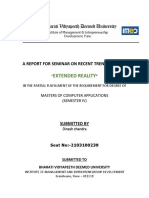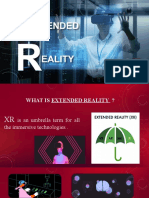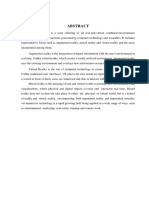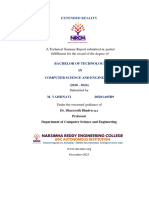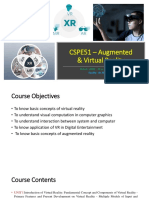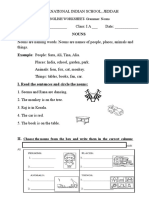0% found this document useful (0 votes)
18 views9 pagesIntroduction To Extended Reality
Extended Reality (XR) encompasses technologies like Virtual Reality (VR), Augmented Reality (AR), and Mixed Reality (MR), which have the potential to transform various industries such as education, healthcare, and entertainment. The XR market is projected to grow significantly, driven by demand for immersive experiences and advancements in technology. Challenges such as technical infrastructure and costs remain, but the future outlook is optimistic with continued innovation and new business opportunities.
Uploaded by
Musfirah QureshiCopyright
© © All Rights Reserved
We take content rights seriously. If you suspect this is your content, claim it here.
Available Formats
Download as PDF, TXT or read online on Scribd
0% found this document useful (0 votes)
18 views9 pagesIntroduction To Extended Reality
Extended Reality (XR) encompasses technologies like Virtual Reality (VR), Augmented Reality (AR), and Mixed Reality (MR), which have the potential to transform various industries such as education, healthcare, and entertainment. The XR market is projected to grow significantly, driven by demand for immersive experiences and advancements in technology. Challenges such as technical infrastructure and costs remain, but the future outlook is optimistic with continued innovation and new business opportunities.
Uploaded by
Musfirah QureshiCopyright
© © All Rights Reserved
We take content rights seriously. If you suspect this is your content, claim it here.
Available Formats
Download as PDF, TXT or read online on Scribd
/ 9


